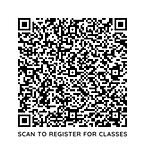
Pilates is a system of exercises using special apparatus, designed to improve physical strength, flexibility, and posture and to create mental acuity. Devised by Joseph Pilates in 1934 to rehabilitate injured soldiers (not super fit models on Instagram). Mr. Pilates was plagued with numerous chronic illnesses himself. He created “Contrology”, Pilates original name, to cure these maladies in a practical manner. Pilates is gentle, challenging, and applicable to every day activities such as sleeping and brushing your teeth.
During a Pilates class, horizontal breath and vertical movement increase blood circulation and the specific engagement of the lower abdominal muscles massage the internal organs and the back. Pilates decreases back pain by focusing on a front to back, navel to spine philosophy. The lower abdominals and inside thigh muscles work together to produce a stronger core.
Movement is life. I prefer the term “movement” to “exercise”. Exercise sounds hard. Movement sounds pleasurable. Movement releases endorphins in the brain. These hormones act as an analgesic, granting your body a reprieve from pain. The biggest quandary is how to safely move without injury or pain. Pilates is low impact movement, mostly done laying flat on your back, and targeted to the individual participant. A knowledgeable Pilates instructor tailors each session to the strengths of the client. In many a hyperbolic moment, I tell my clients that Pilates saved my life, that and great doctors.
I was diagnosed with Crohn’s, an auto immune disease effecting the small intestine, in 1992.
Thriving with a chronic illness or pain requires discipline. One of my current clients told me, “It is easy to be sick. It takes work to be healthy.” I lean on my twenty plus years of Pilates practice to heal and thrive in a less than perfect body.
As a result of my continued journey to thrive through chronic illness and pain, I have become a more compassionate human and Pilates instructor. I enjoy working with the interesting qualities of the body’s imperfections. Watching a client gain strength, flexibility and control with proper alignment and posture is a thrill. Pilates is designed to age with the practitioner. Balance, stemming from the articulation of the feet (most classes begin with foot work), is vital to leading an active life with less pain and more balance.
Pilates for the beginner is intimidating. During the first class, utilizing the specific breath, muscle coordination, and mental presence starts out daunting but quickly turns to emboldening. I ask each client after class how they feel and the answer is always calm and energized. Discovering their own body still knows how to move is a life changing revelation.
Pilates is a gift to the body. Using the spring tension of the Pilates apparatus to increase strength, flexibility, and control is fun and therapeutic. Like the classic Pilates abdominal series, most Pilates exercises can be adapted for home practice in between your studio classes. Pilates is practical and can be performed standing, sitting, or lying down. Injury or illness do not hamper your fitness level.
Life has become more sedentary in the last few decades. Chronic neck and shoulder pain are prevalent. Pilates adapts to office environments by exploring correct sitting and standing postures to prevent and relieve pain.
PIiates heals pain and allows every body to thrive mentally and physically.


.png)


